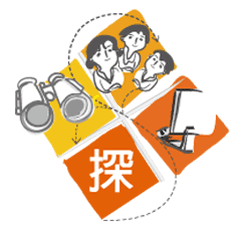Online Lesson Seasons
The five major phases of the TEL model are included in the online lesson seasons.
- contextualization: The featuring photos taken of natural scenes around the world during different seasons helps to promote students’ contextualization of the phenomenon of the four seasons by allowing them to make a connection with their own life experiences.
- sense making: A series of animations present possible reasons for the seasons in order to help students visualize the scientific concepts embedded in this phenomenon. The students are given questions that guide them to “make sense of” the problem as to why the earth has four seasons.
- exploration: A computer simulation called SeasonSim includes the variables influencing the seasons, such as latitude, longitude, the tilted angle of the earth’s axis and eccentricity. Students can change these variables to see how solar radiation changes the earth’s surface temperature. In this simulation, students can test their hypotheses and reconstruct or build a model to explain why the earth undergoes seasonal change.
- modeling: Students need to draw concept maps after exploring the computer simulation in order to represent their ideas about season formation. The process of concept mapping or modeling is completed on an online construction pad, which is designed for students’ concept mapping. When students draw their concept maps, they connect their ideas and reflect on their modeling process.
- application: The system administrator of an online forum gives students a new situation that requires them to explain, for instance, how the seasons on Mars change and what the major factors are which influence season formation on Mars. This learning task helps students to apply their model in a new situation, verify the accuracy of their model, and discover its possible limitations.
Results:
The TILE research team conduct a series of studies to explore senior high school students’ conception about seasons. First, a two tier test was used to detect students’ misconception patterns. Then, the online lesson Seasons was developed according to these misconception patterns. After a field teaching, seventy-five high school students participated in this study and multiple sources of data were collected to investigate students' conceptual understandings. The findings showed that the number of alternative conceptions held by students were reduced except for the incorrect concepts of “the length of sunshine” and “the distance between the sun and the earth.” (Hsu, Wu, & Hwang, 2008)
Therefore, researchers refined the two-tier test in order to detect students’ multiple misconceptions and added a function into the lesson Seasons which allow students to immerse themselves in online animations to understand the meaning of the seasons, browsed and analyzed the animations of specific anomalies related to their own alternative conceptions diagnosed from the test. To explore the ways in which teacher-guided and student-centered instructional approaches influence students’ conceptual understanding of seasonal change, we designed a technology-enhanced learning (TEL) course to compare, by means of concept maps, the learning outcome of students in two groups: a teacher-guided (TG) class (with whole-class presentations) and a student-centered (SC) class (with individual online learning). The participants were two classes of second-year senior high school students in Taiwan. Overall, the results showed that most students developed a deep and accessible understanding of the reasons for the seasons after undergoing experiences provided by the TEL course. More importantly, it was found that, in this technologically enhanced environment, the student-centered approach was more effective than the teacher-guided approach in altering students’ alternative conceptions of seasonal change the cognitive processes of contextualization and sense making helped students re-examine their old ideas about the phenomena, leading them to generate alternative conceptions and undergo both positive and negative conceptual change. The student-centered approach allows students to more freely test their own hypotheses in the processes of exploration and modeling, and thus move from assimilatory to properly scientific explanations (Hsu 2008).
Educational Implications:
The implications from this series of studies include: (1) The TEL model used for difficult concepts such as seasons promote students’ conceptual change so teachers can consider to designing their technology integrating instruction based on the TEL model. (2) Research results have following practical meanings on teaching: (1) causes for the formation of 4 seasons commonly cited in scientific documentations are not easy to learn for students, TEL model could be incorporated in teaching practice as added reference; (2) on concepts that are difficult to change, the model provides students a chance for exploration, modeling, application; (3) creating a student-oriented learning environment that uses use student’s preconceived concept as foundation for building knowledge.
Related information:
For more details, please refer to the related links

|
